Do you want to quickly find your target and improve your long-distance shot with a rifle?
Riflescopes give hunters an edge, especially if you’re a beginner trying to take a clean shot from far away. The thing is, there is a multitude of options, so it can feel overwhelming to choose the best one for your needs.
Our guide on how to choose a rifle scope tells you everything you need to know!
What is a Rifle Scope?
Before we dive into the technical stuff, let’s review what a rifle scope actually is. A rifle scope is an optical device used to improve line of sight. It can be mounted on a rifle, shotgun, or handgun.

The rifle scope improves sighting by enabling the shooter to aim through the scope and eliminating much of the complexity that lining up iron sights involves.
For example, with an iron sight, you must first line up the rear sight, front sight, and target. However, with a rifle scope, you only have to line up the reticle with the target.
Rifle scopes are perfect for beginner hunters, making it easier to learn how to shoot, especially since many rifle scopes can magnify objects, so your target is shown closer for a cleaner shot.
Rifle scopes contain lenses for magnification and a reticle to help with aiming. There are numerous designs and configurations, but we’ll focus on how to identify certain features for your needs.
Let’s quickly break down the basics. First, you have the lenses, which include the objector, erector, magnification, and ocular lenses.
There are many other features to consider when it comes to how to choose a rifle scope, and we’ll certainly get into it more later in the guide, but first let’s go over the benefits of owning one of these devices.
4 Benefits of a Rifle Scope
Is a rifle scope worth the investment? If you’re a beginner, it can be the difference between a good time and a great time—to put it mildly. Let’s take a look.

Increased Accuracy When Shooting
Taking a clean shot with a rifle from far away is difficult and typically takes years to master. But for beginners, the rifle scope improves your aim and boosts magnification to give you a clear line of sight to hit your target with accuracy.
You Can Shoot From a Longer Range
Rifles can shoot from a myriad of angles, but for long distances, a rifle scope can increase your chances of hitting your target from far away. This is especially useful for beginner hunters.
Increased Comfort
Comfort is always important with any product, and with rifle scopes, there are so many designs that allow the shooter to test out various features and find what feels good for them.
Simply put, you want to have an easy time shooting if you’re a beginner, and the rifle scope helps you get your bearings while ensuring you have an enjoyable time with the results you want.
Safety
Staying vigilant is also paramount when hunting. A rifle scope can help by giving you more clarity when fixating on a target, so you don’t make any mistakes—especially if there are others in the vicinity or you’re hunting in the dark.
What to Consider When Choosing a Rifle Scope
Next, we look at the features to consider when deciding what rifle scope to buy. As mentioned, there is a wide range of designs to look at, and it can get overwhelming fast if this is your first time.
Some handy advice to keep in mind is that when pairing a rifle and scope, the best combination is one that the hunter knows well. In other words, it doesn’t matter how fancy your setup is. Instead, focus on selecting a high-quality scope within your budget, then get out there and practice.
Alright, let’s get into the features!
What Magnification Do You Need?
As we discussed, the magnification lens makes the image you’re focusing on appear larger, even when far away.
Say you’re hunting and your target is just barely visible in the long grass. The magnification is crucial because it gives you a more precise shot when aiming from a long distance.
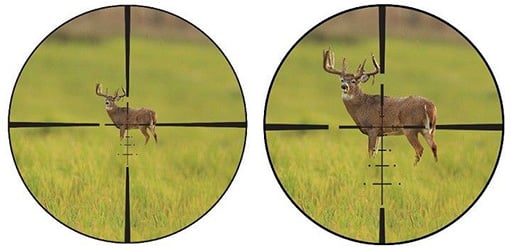
When looking at a rifle scope, there is usually a sequence of numbers on display, separated by an “X”. The first number before the X is the magnification number. For example, if you see 2×30, the magnification number is 2.
Naturally, you’re going to see different magnification numbers, which begs the question—which one is right for you? Here’s how to make the right pick:
Low magnifications are ideal for hunting in areas where there is thick cover and you’ll primarily be taking short, successive shots. Low power also gives you a wider field of view for hitting your target with less effort.
The advantage a lower magnification has over higher magnifications is steadiness. With higher magnification, any little movement causes the crosshairs to jump, which can be distracting if you’re trying to aim at your target.
However, higher magnification trumps lower any time you’re working those long-range shots—as long as you can keep your hands steady.
What Objective Lens Do You Need?
Next up, we look at the other side of the lens spectrum—at the objective lens. Going back to our number sequence, while the magnification number is first, the number after the X is the objective number.
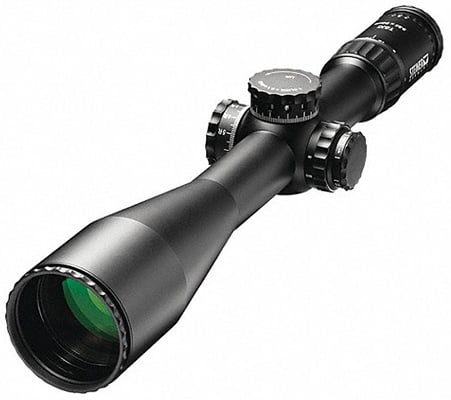
Choosing the objective depends on how much light is admitted through the scope, resulting in a brighter image. The most common objective lens number you’ll see is 40mm wide. You’ll also see 50mm and 32mm.
Hunters who like to head out in the early morning or late evening might prefer a larger objective, such as a 50mm, which may give them a few more shots before the light changes.
Those who opt for a 32mm might prefer a more compact scope that’s easier to handle.
What is a Lens Coating?
Keeping up so far? Great. Let’s move on to the next order of business—the lens coating.

This is the invisible coating applied to reduce glare while enhancing sight. There are four types to know when scouting the scopes:
What Reticles Do You Need?
When you place your eye up to the rifle scope, you’ll notice a series of lines or fibers in the eyepiece. This is called the reticle or the “crosshairs”.
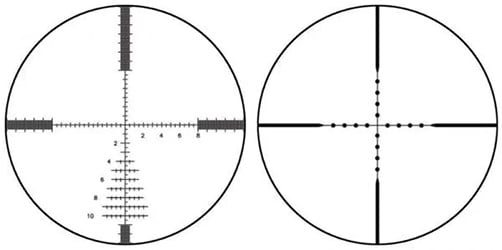
You can focus the reticle on most rifle scopes to sharpen the aiming point in your field of view. There are different types of reticles, with the most common being BDC (bullet drop compensator) and MOA (minute of angle).
BDC is the basic type, displaying the main crosshairs with three to five horizontal hash marks that represent the bullet drop, with each mark corresponding to a specific shooting distance.
MOA is more complex since the hash marks correspond with the minute of angle elevation drops. There’s some calculating to do if you use this type of reticle. For example, if a bullet drops 24 inches at 400 yards, the shooter needs to use the hash mark that corresponds with 400 yards, which comes out to 6 MOA.
You might even see what’s called windage hash marks, which means that at long range in an open environment, the reticle compensates for wind drift that pushes bullets away from where they were originally aiming.
Here are some other reticles to consider:
What Turrets Do You Need?
You might notice some knobs on a rifle scope. These are called turrets and account for the vertical and horizontal adjustments.
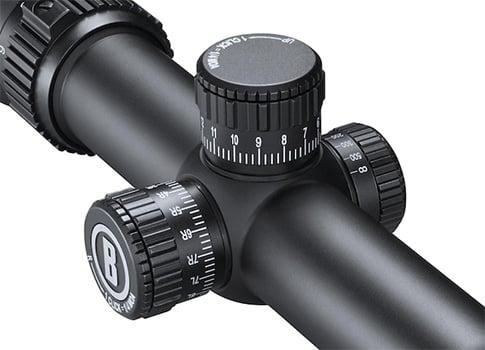
There is typically a windage knob on the side that moves horizontally, and the elevation knob moves vertically.
Many manufacturers also give the option to customize your scope’s turrets based on the bullet elevation and caliber that must be adjusted manually. This allows the hunter to dial in the elevation turret to the right yardage according to the target’s distance for enhanced aiming.
While custom turrets are popular among hunters, it’s not a necessity for optimal riflescope performance.
What’s Your Budget?
Finally, we zero in on the budget, as this is understandably the main consideration for most.
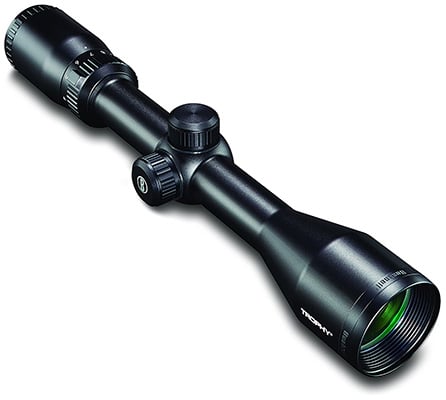
Prices for rifle scopes range between $100 and over $1,000. The key to buying a rifle scope is to pay as much as you can because the more you pay, the better the quality of the lenses.
Light transmission is greater, the clarity is finer, and the construction is lighter. Overall, the performance is going to be what you expect, thanks to quality glass.
Don’t forget the extra features that come with quality, including waterproof and fog proof lenses and a few reticle options.
What’s the Best Rifle Scope for Hunting?
If you’re stuck on how to choose a rifle scope for deer hunting specifically, here’s our best recommendation. Stick between a 3-9x magnification for a whitetail deer gun—that’s the standard for most.
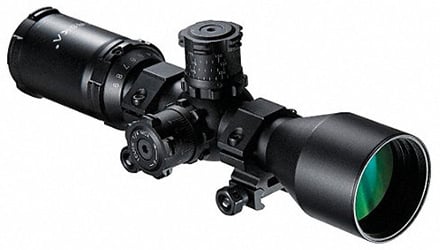
If you’re hunting mule deer or antelope, try a magnification range of 4-12x, since the average shot is usually longer than if you’re hunting whitetail.
For hunting in an open environment, feel free to go for a higher power, since more likely than not, you’ll be able to easily see moving animals or people around you. A higher power is also ideal if you must shoot from a hilltop or mountain.
Long-range shooting or hunting for small game requires no more than 6-20x for a variable scope with less power.
If you aren’t into dealing with too many moving parts and prefer a quick, simple setup, there are scopes with a fixed magnification, such as the common 4x power. This is ideal for squirrel rifles and .22s for plinking.
How to Choose a Rifle Scope Conclusion
As our guide on how to choose a rifle scope comes to a close, it’s important to take away a few important details. If you’re a beginner, remember that you can spend all the money on a world-class rifle and scope setup, but ultimately, that’s not what’s going to deliver results.
Practice and experience are what’ll sharpen your skills, as you learn how to use your rifle scope and discover what works best for your style of hunting and the environment where you’re shooting. Rifle scopes range greatly in price, but investing in a top-quality model gives you the best clarity, durability, and performance.
Resources and References:
- The Basics of Riflescopes and How They Work, NRA Blog.
- How Rifle Scopes Work, How Stuff Works.
- A Complete Guide to Riflescopes, Field & Stream Magazine.